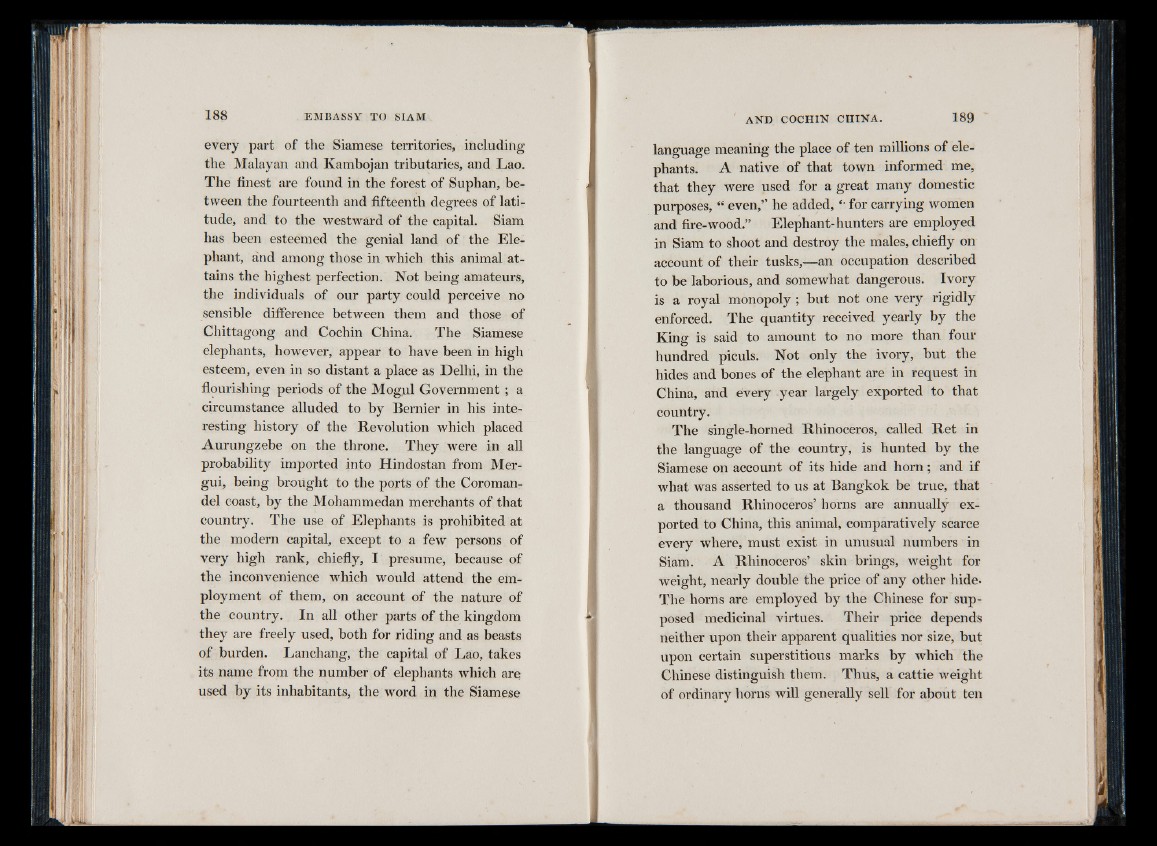
every part of the Siamese territories, including
the Malayan and Kambojan tributaries, and Lao.
The finest are found in the forest of Suphan, between
the fourteenth and fifteenth degrees of latitude,
and to the westward of the capital. Siam
has been esteemed the genial land of the Elephant,
ánd among those in which this animal attains
the highest perfection. Not being amateurs,
the individuals of our party could perceive no
sensible difference between them and those of
Chittagong and Cochin China. The Siamese
elephants, however, appear to have been in high
esteem, even in so distant a place as Delhi, in the
flourishing periods of the Mogul Government ; a
circumstance alluded to by Bernier in his interesting
history of the Revolution which placed
Aurungzebe on the throne. They were in all
probability imported into Hindostán from Mer-
gui, being brought to the ports of the Coromandel
coast, by the Mohammedan merchants of that
country. The use of Elephants is prohibited at
the modern capital, except to a few persons of
very high rank, chiefly, I presume, because of
the inconvenience which would attend the employment
of them, on account of the nature of
the country. In all other parts of the kingdom
they are freely used, both for riding and as beasts
of burden. Lanchang, the capital of Lao, takes
its name from the number of elephants which are
used by its inhabitants, the word in the Siamese
language meaning the place of ten millions of elephants.
A native of that town informed me,
that they were used for a great many domestic
purposes, “ even,” he added, h for carrying women
and fire-wood.” Elephant-hunters are employed
in Siam to shoot and destroy the males, chiefly on
account of their tusks,—an occupation described
to be laborious, and somewhat dangerous. Ivory
is a royal monopoly ; but not one very rigidly
enforced. The quantity received yearly by the
Kina: is said to amount to no more than four
hundred piculs. Not only the ivory, but the
hides and bones of the elephant are in request in
China, and every year largely exported to that
country.
The single-horned Rhinoceros, called Ret in
the language of the country, is hunted by the
Siamese on account of its hide and h o rn ; and if
what was asserted to us at Bangkok be true, that
a thousand Rhinoceros’ horns are annually exported
to China, this animal, comparatively scarce
every where, must exist in unusual numbers in
Siam. A Rhinoceros’ skin brings, weight for
weight, nearly double the price of any other hide.
The horns are employed by the Chinese for supposed
medicinal virtues. Their price depends
neither upon their apparent qualities nor size, but
upon certain superstitious marks by which the
Chinese distinguish them. Thus, a cattie weight
of ordinary horns will generally sell for about ten